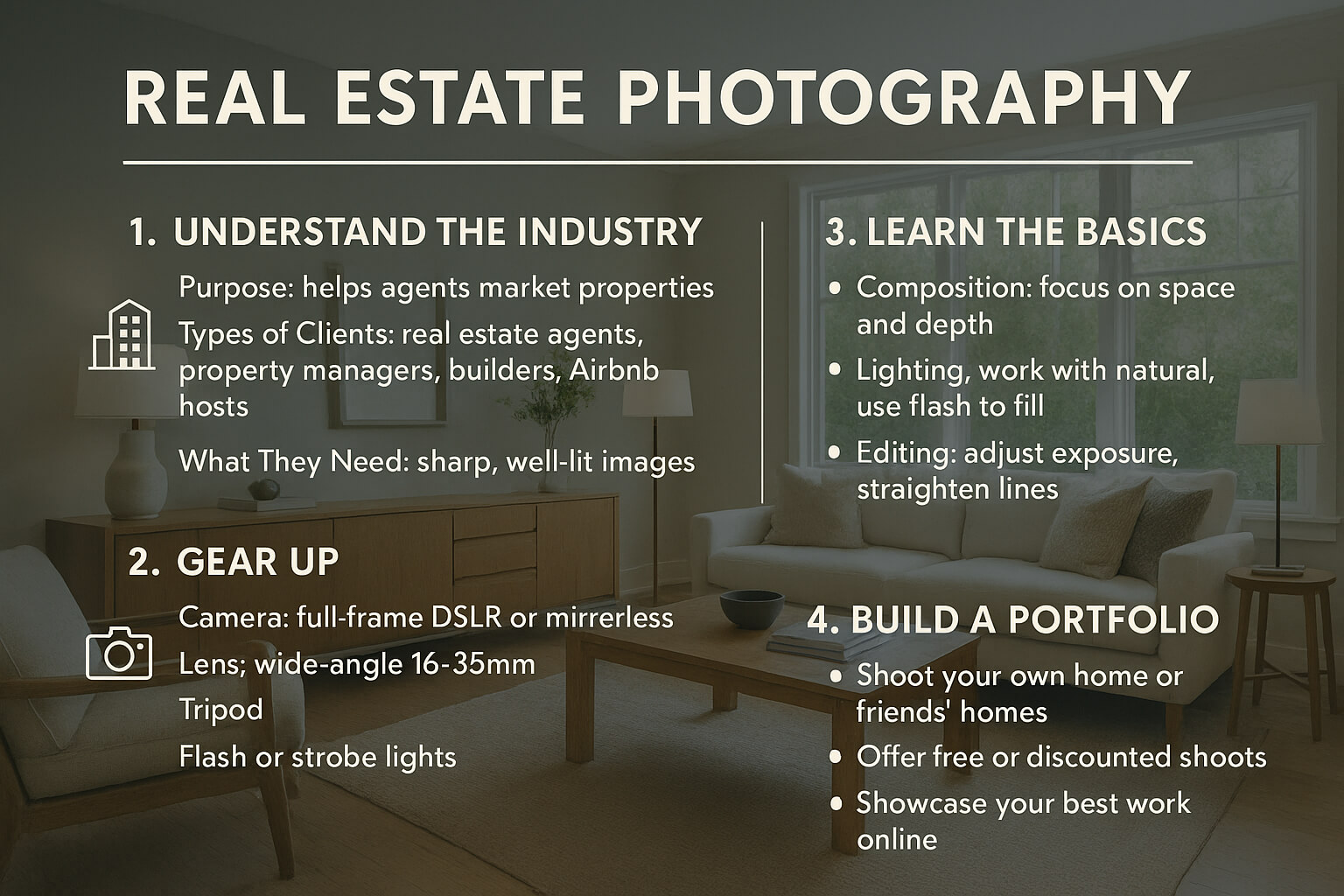May 16, 2025

A Comprehensive Guide for Aspiring Professionals
In today's digital age, high-quality visuals are paramount in the real estate market. Listings featuring professional photographs not only attract more views but also tend to sell faster. Whether you're a photography enthusiast or a beginner aiming to monetize your skills, real estate photography offers a promising avenue.
Real estate photography transcends mere documentation; it's about crafting a compelling narrative of a property. Effective visuals can evoke emotions, highlight features, and provide potential buyers with a realistic sense of the space.
Benefits include:
Before diving in, familiarize yourself with the real estate landscape:
Investing in appropriate equipment is crucial:
For beginners, consider cameras like the Canon EOS R50 or Sony Alpha a6400, known for their user-friendly interfaces and high-quality outputs.
Effective composition and lighting can significantly enhance property visuals:
Post-processing refines images, correcting imperfections and enhancing appeal:
These tools allow adjustments in brightness, contrast, color balance, and more, ensuring your photos meet professional standards.
Your portfolio showcases your skills to potential clients:
Consider creating a personal website or leveraging platforms like SmugMug or Pixpa to display your work.
To attract clients:
Additionally, explore selling your photos online for passive income. Platforms like Shutterstock and Adobe Stock allow photographers to monetize their work.

Breaking into real estate photography in 2025 requires a blend of technical skills, artistic vision, and strategic marketing. By understanding the market, investing in the right gear, mastering composition, and effectively promoting your services, you can establish a successful career in this field.
Stay up to date with the newest tips, gear reviews, and step-by-step guides to elevate your photography journey from home and beyond.